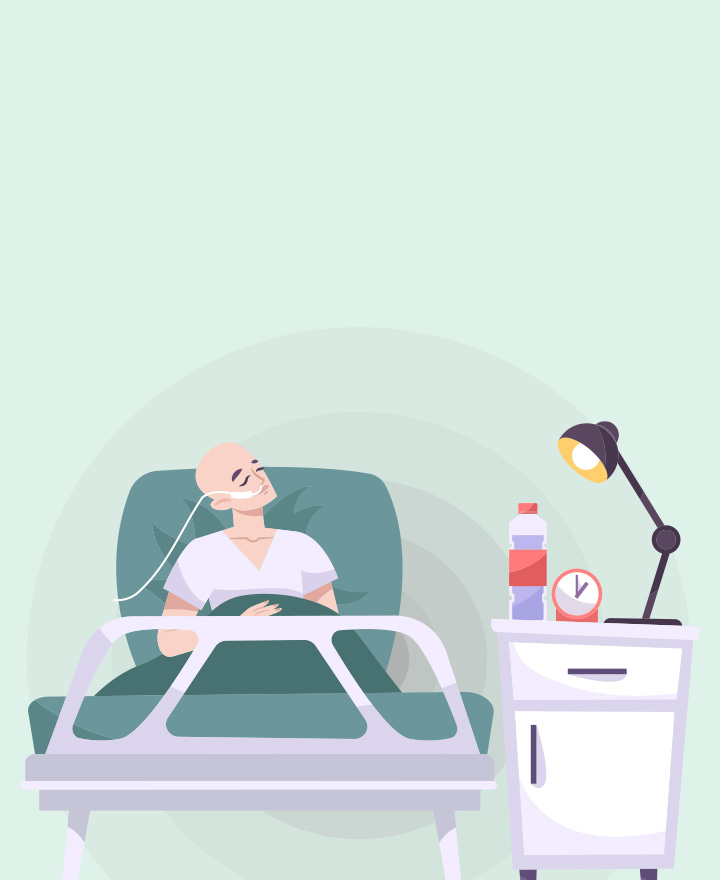

Symptoms of Leukaemia in Children
Leukaemia bears the tag of the most common form of carcinoma in children and adolescents. It affects the white blood cells in the body, and in most cases, it is asymptomatic. Read on to learn about the identifiable symptoms and modes of treatment so you seek timely medical intervention.
What is Childhood Leukaemia?
Acute Lymphoblastic Leukaemia (ALL) is the most common type of leukaemia in children, accounting for approximately 75% of cases. It occurs when the bone marrow produces excessive immature lymphocytes (a type of white blood cell). These lymphocytes crowd out normal cells, leading to symptoms and complications. Acute Myeloid Leukaemia (AML), while less common than ALL, is more aggressive and involves the rapid growth of abnormal myeloid cells. These cells can subsequently accumulate in the bone marrow and bloodstream, interfering with the production of healthy blood cells.
Symptoms
Recognising the symptoms of leukaemia in children can be challenging, as they often mimic those of other common illnesses. However, some signs warrant closer attention and medical consultation. One should look out for the following symptoms —
• Frequent Infections:
As a result of compromised immune system, children with leukaemia may develop recurrent infections.
• Unexplained Fevers:
Persistent or recurring fevers without an obvious cause can be a red flag.
• Fatigue and Weakness:
Anaemia resulting from leukaemia can lead to chronic tiredness and general weakness.
• Easy Bruising or Bleeding:
Low platelet counts can cause children to bruise easily, have frequent nosebleeds, or bleed excessively from minor cuts.
• Bone or Joint Pain:
Leukaemia cells can accumulate near the surface of bones or within joints, causing pain.
• Swollen Lymph Nodes:
Swelling in the lymph nodes, particularly in the neck, armpit, or groin, can be an indicator.
• Pale Skin:
Anaemia may also result in pallor, making the child's skin appear unusually pale.
• Abdominal Pain or Swelling:
Enlargement of the spleen or liver can cause discomfort or a noticeable swelling in the abdomen.
• Fever or Night Sweats:
The child may start getting fever at night or get night sweats.
How to Treat Childhood Leukaemia?
Treating childhood leukaemia requires a multifaceted approach. Here are the main treatment options:
• Chemotherapy involves using medicines to kill cancer cells. In children, chemotherapy is given in several phases to achieve remission, eliminate remaining leukaemia cells, and also to prevent relapse.
• Radiation Therapy is recommended in certain cases, particularly if leukaemia has spread to the brain or central nervous system.
• Stem Cell Transplant, also known as a bone marrow transplant, can be an effective mode of treatment for some children with leukaemia. It involves replacing the diseased bone marrow with healthy stem cells from a donor.
• Immunotherapy harnesses the body’s immune system to fight cancer.
Conclusion
Treatment approach for childhood leukaemia has improved over the past few decades. Early detection helps in planning an effective treatment plan. Understanding the symptoms and available modes of treatment can help families navigate the challenges of childhood leukaemia. Constant research and advancement in medical science offers more than a glimmer of hope for more effective and less invasive treatments for young patients fighting this disease.
One of the important components of our overall wellness is also being financially secured. Healthcare emergencies can happen any time, but a good health insurance policy can protect you from such uncertain situations. To know more about Wellness and other health related tips, visit the wellness corner.
Source: medlineplus.gov, webmd.com, kidshealth.org, cincinnatichildrens.org, sciencedirect.com
Disclaimer: This blog provides general information and discussions about health and related subjects. The information and other content provided in this blog, website or in any linked materials are not intended and should not be considered, or used as a substitute for, medical advice, diagnosis or treatment. Kindly contact your Doctor before starting a new medicine or health regime.
Related Articles
What Do Cancer Stages And Grades Mean?
Be Aware Of Cancer Signs And Symptoms
Chemotherapy: All You Need To Know About The Side Effects
Published on July 17, 2024














 Health Insurance
Health Insurance  Travel Insurance
Travel Insurance  Car Insurance
Car Insurance  Cyber Insurance
Cyber Insurance  Critical Illness Insurance
Critical Illness Insurance
 Pet Insurance
Pet Insurance
 Bike/Two Wheeler Insurance
Bike/Two Wheeler Insurance  Home Insurance
Home Insurance  Third Party Vehicle Ins.
Third Party Vehicle Ins.  Tractor Insurance
Tractor Insurance  Goods Carrying Vehicle Ins.
Goods Carrying Vehicle Ins.  Passenger Carrying Vehicle Ins.
Passenger Carrying Vehicle Ins.  Compulsory Personal Accident Insurance
Compulsory Personal Accident Insurance  Travel Insurance
Travel Insurance  Rural
Rural